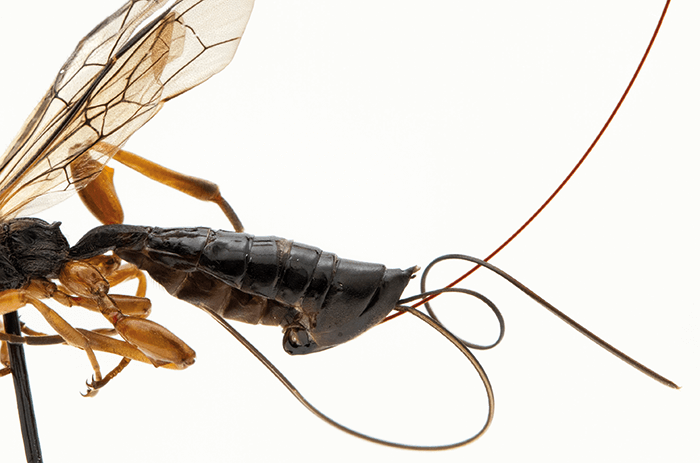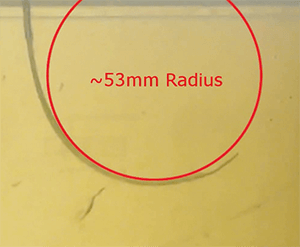
If you ask the general public to name their least favorite creature, wasps are likely to be on the hit list. But in addition to their valuable pollinating activities, our unfriendly ‘destroyers of picnics’ have been the inspiration for a potentially ground-breaking technique to detect and treat cancerous tumors of the brain, developed by Ferdinando Rodriguez y Baena at Imperial College, London. Female wood-boring wasps use a long, flexible yet strong ovipositor to bury and protect their eggs, a little-known fact that provided an unexpected solution to the difficult task of accurate neurosurgery.
The idea for the needle came about by chance during a dinner, when Rodriguez y Baena’s colleague told him about the unique physical feature of the wasp. “Suddenly, I wondered whether we could mimic this attribute in robotic medical technology to improve the delivery of treatments,” Rodriguez y Baena explains. “We started by trying to blindly duplicate what nature does (and failed!) before eventually abstracting the key mechanism that governs this beautifully elegant biological insertion process to produce a viable concept.”

Click here to watch a short video
The flexibility of the needle could have a significant impact on several medical procedures and could even enable molecular analysis, Rodriguez y Baena says. “If we are able to deploy Raman imaging along the flexible fibers embedded within our needle, we could use our steerable system to make “on the spot” measurements related to the tissue being intersected. For instance, we could differentiate between white and grey matter or identify the boundaries of a lesion.” The process from concept to reality has been a bumpy road, Rodriguez y Baena says. “During the last eight years, we have faced many challenges, ranging from how to control this unique, biologically inspired design, to its miniaturization and assessment within a realistic setup.” It is expected to be another four years before it begins to make its impact on the industry. “EDEN2020 will fund the translational work and pre-clinical assessment necessary to take this concept closer to reality. If all goes well, we could be in a position to plan a controlled clinical study in 2020.” As is so often the case in modern science, the success of the needle has been a collaborative effort. “The list of collaborators who have helped to make this project a success is long, starting with the original inspiration for a proof of concept grant funded by the EPSRC,” says Rodriguez y Baena. “Since then, I have worked with several UK and European partners and a number of these are now part of the EDEN2020 consortium.” His relationship with long-time collaborator Lorenzo Bello (University of Milan) is likely to intensify from the April 1, 2016, which coincides with the start of EDEN2020: “I have already known Professor Bello for a number of years. And as he is the clinical lead on the project, I expect that we will be working very closely together for the next four years at least!” So, we now have a ready answer the next time someone asks, “What’s the point of wasps?”




